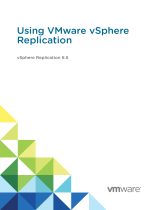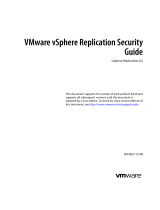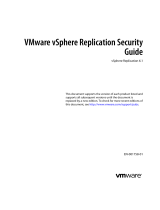
Managing NAS Volume Snapshots and Snapshot Schedules......................................................39
Create and Manage Replications and Live Volumes..........................................................................41
Replication Operations..................................................................................................................41
Live Volume Operations............................................................................................................... 46
3 Working with Virtual Machines........................................................................53
Creating Virtual Machines...................................................................................................................53
Deploy Virtual Machines to an Existing VMFS or NFS Datastore.................................................53
Deploy Virtual Machines to a New VMFS Datastore....................................................................54
Create Virtual Machines to an NFS Datastore Using an Existing NFS Export..............................55
Create Virtual Machines By Creating a New NFS Export............................................................. 57
Clone a Virtual Machine......................................................................................................................58
Recovering a Virtual Machine From a Replay.................................................................................... 59
Recovering Virtual Machine Data From a Replay.........................................................................59
4 Viewing Dell Storage Information...................................................................60
Viewing the Dell Settings for a Host.................................................................................................. 60
Connectivity Legend......................................................................................................................61
Configuring Storage Center Connections....................................................................................61
Adapter Details.............................................................................................................................. 62
Storage Details.............................................................................................................................. 62
Using Dell Views..................................................................................................................................62
General Tab................................................................................................................................... 62
Usage Statistics Tab.......................................................................................................................65
Connectivity Info Tab....................................................................................................................67
Volume Replays Tab......................................................................................................................69
Replications/Live Volume Tab...................................................................................................... 69
Viewing Dell Charts............................................................................................................................. 71
Charts.............................................................................................................................................73
5 Wizard Page Reference......................................................................................75
Add Storage (Storage Center)............................................................................................................. 75
Add Storage (NFS)............................................................................................................................... 76
Compatibility Mode.............................................................................................................................76
Create Multiple Datastores..................................................................................................................77
Customization..................................................................................................................................... 78
Customization For Clone Virtual Machine.........................................................................................78
Datastore Lookup................................................................................................................................79
Datastore Name.................................................................................................................................. 79
Datastore Options...............................................................................................................................80
Datastore Properties............................................................................................................................81
Datastore Selection for Clone Virtual Machine................................................................................. 82
4























